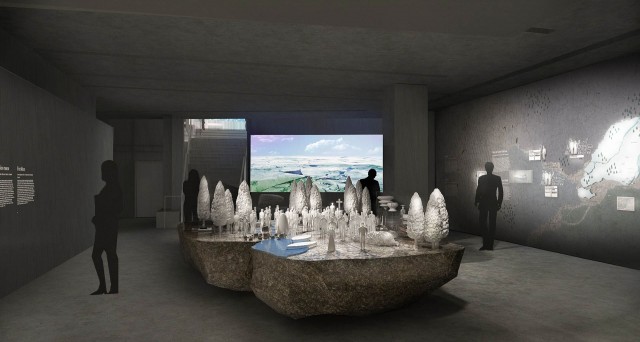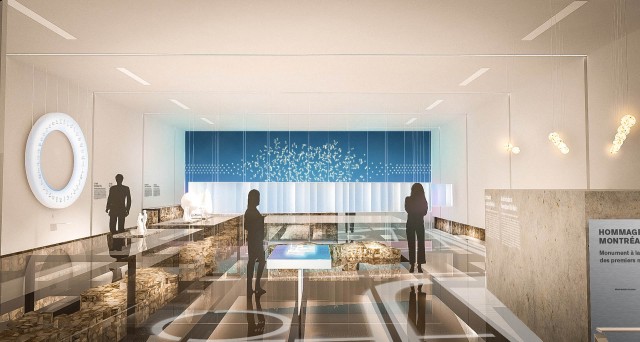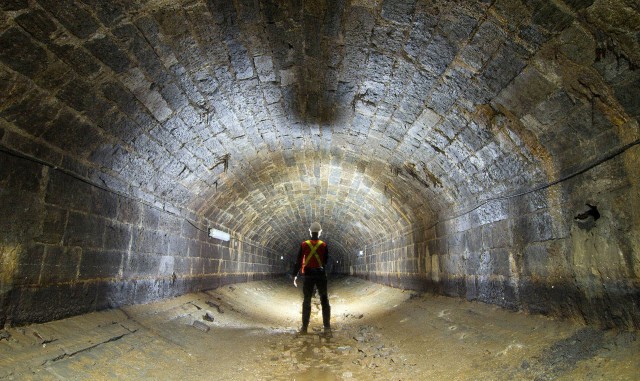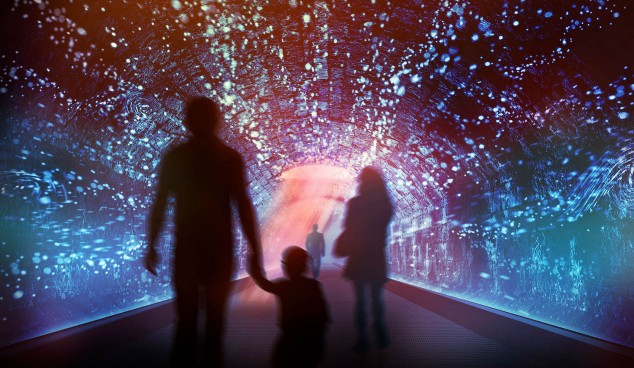Fort Ville-Marie: target 2017
A legacy for the 375th anniversary of the City of Montréal
In May 2017, the Museum is opening the Fort Ville-Marie - Quebecor Pavilion in Old Montréal and makes the birthplace of Montréal accessible to the public. The site is a truly significant location: the first French settlement built in 1642 and administrative centre of the colony founded by Paul de Chomedey de Maisonneuve and Jeanne Mance subsequently occupied by the governor of New France, Louis-Hector de Callière, who built his residence on the spot.
Again for 2017, the Museum has restored the Collector Sewer, the first of its kind to be built in Canada and will connect the fort Ville-Marie pavilion to the main building underground. Built in 1832 and 1838, this masterpiece of civil engineering is unique in North America and has become the main artery of the Montréal Archaeology and History Complex.
Thanks to the financial support of the City of Montréal, restoring the vestiges of fort Ville-Marie and the Collector Sewer for the city’s 375th anniversary will make them part of the city’s heritage. Pointe-à-Callière is marking this anniversary and concurrently the 25th anniversary of the Museum.
Fort Ville-Marie
It was on this spot that Paul Chomedey de Maisonneuve and Jeanne Mance founded Ville-Marie in 1642 and that governor Louis-Hector de Callière built his residence in 1695. The site was not discovered until Pointe-à-Callière acquired a 19th Century property located adjacent to the Museum’s main building. Work conducted by the Pointe-à-Callière Archaeological Field School in partnership with Université de Montréal from 2002 to 2014 allowed for the discovery of the ruins of fort Ville-Marie and Callière's Residence and which in turn led to a better understanding of the period when the city was founded. The city will make this site accessible to the general public thanks to a new pavilion in Old Montréal.


The Collector Sewer
A portion of the Collector Sewer has been restored and has become the main artery of the Montréal Archaeology and History Complex by creating an underground network connecting a unique series of architectural and cultural sites. In 2017, the sewer collector that made it possible to take the Little Saint-Pierre River underground in 1832 has become accessible to visitors over a length of 100 metres and will offer a truly dramatic and memorable experience in the bowels of the earth of our city of old. The sewer will propose a sensory experience with Memory Collector.


In 2017, the Complex will include existing buildings and structures…
- The Éperon
- The archaeological crypt (first location of the Place Royale market)
- The Old Costum House
- Mariners’ House
- The Youville Pumping Station
- Fort Ville-Marie - Quebecor Pavilion
- The First Collector Sewer
The future of Pointe-à-Callière
The expansion project for the Montréal Archaeology and History Complex will continue beyond 2017
Main Pavilion
Located on Place D’Youville West at the corner of McGill Street, a main pavilion bathed in natural light will welcome over a half-million visitors per year. Build on the site where St. Ann’s Market and the Parliament of the United Province of Canada were once located, the pavilion will provide a gateway to the ruins in the basement and will provide a window on the past, the present and the future.
Parliament of the United Canada
Closely associated with an important chapter in the history of Canada, the first permanent Parliament of the United Province of Canada was established in 1844 in St. Ann’s Market Building, built in 1832. A number of important pieces of legislation were adopted here, including the 1848 act establishing “responsible government.” On April 25, 1849, the building was consumed by fire, destroying two parliamentary libraries within it. The Museum intends to restore these important vestiges of our past, which today still can be found beneath Place D’Youville West in Old Montréal.
Central Fire Station
Inaugurated in 1904, this fire station operated until 1972. Since 1983, the Queen-Anne-style building currently houses the Centre d’histoire de Montréal. A feasibility study is now being conducted.
National and International Exhibitions
An underground exhibition space for national and international exhibits will be constructed under Normand Street, adjacent to the Dominique-Ducharme Building (Canada Customs) located on Place D’Youville West. The more than 1,000-square-metre public areas will be complemented by museum-standard backroom facilities. The new exhibit space will be linked to the Museum’s underground network and the Collector Sewer.
Construction advisory:
The Museum is very much aware that this work will occasion inconvenience, but every effort is being made so the work can be conducted in such a way as to minimize impact on neighbours, retailers and visitors. Thank you in advance for your comprehension and support during the course of this significant project for Old Montréal and the heritage value it has for the city and for future generations.
